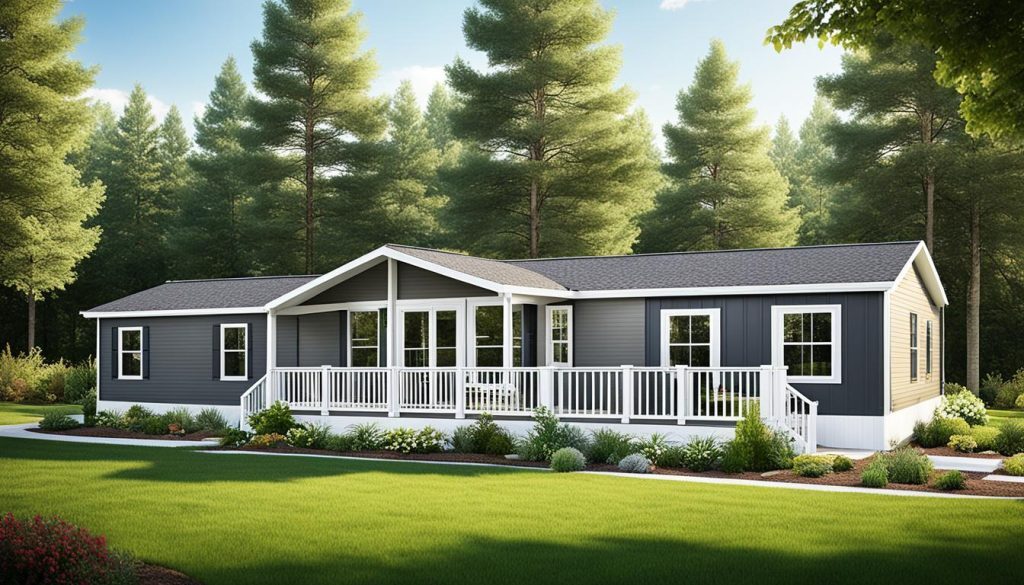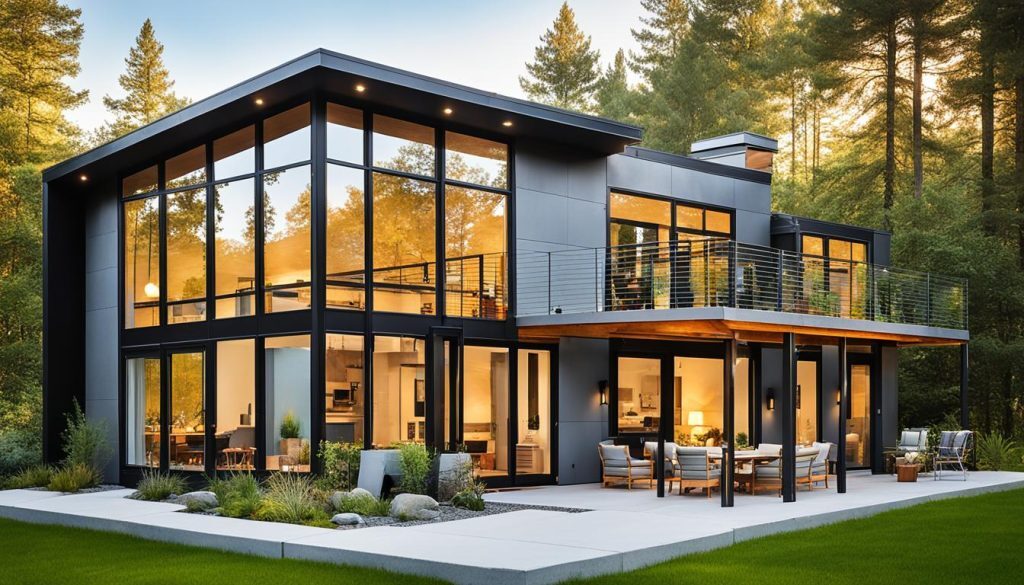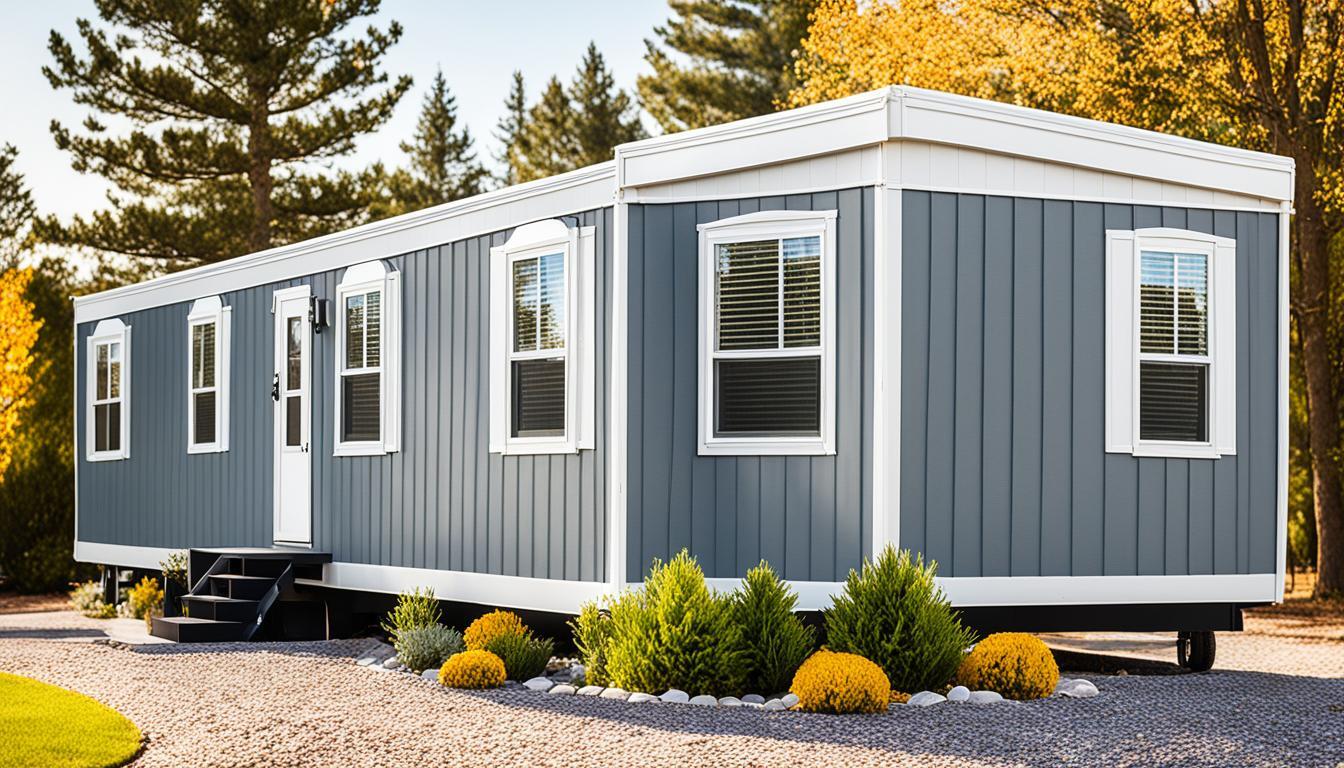Did you know that modular and mobile homes are both types of prefabricated homes? These “prefab” homes are built in a factory, rather than completely on-site like traditional homes. However, there are key distinctions between modular and mobile homes that you may not be aware of. Understanding these differences can help you make an informed decision when it comes to choosing the right type of home for you and your family.
Key Takeaways:
- Mobile homes were popular in the early and mid-1900s but are no longer built due to outdated construction and safety standards.
- Manufactured homes are constructed almost entirely in a factory and can be moved if they have a pier and beam foundation.
- Modular homes are built in pieces and then assembled at the home site, meeting the same building codes as traditional on-site constructed homes.
- Modular and manufactured homes are generally more affordable than traditional site-built homes, with modular homes offering more financing options.
- The value of a manufactured home may depreciate more quickly, while the value of a modular home follows the housing market.
What is a Mobile Home?
Mobile homes, also commonly known as trailers, were once a popular housing option in the early and mid-1900s. They provided a flexible and affordable solution for individuals and families who needed to relocate frequently. These original mobile homes were designed to be easily moved from one location to another, resembling trailers or campers. They were equipped with wheels and an exposed trailer coupler, making them suitable for towing.
However, mobile homes are no longer constructed due to updated construction and safety standards. The U.S. Department of Housing and Urban Development (HUD) established regulations and standards for manufactured housing through the National Manufactured Housing Construction and Safety Standards Act, commonly known as the HUD standards or the HUD Code. Mobile homes were phased out as they did not meet these standards, ensuring that manufactured homes built today adhere to higher quality and safety measures.
What is a Manufactured Home?
Manufactured homes, also known as mobile homes, are constructed almost entirely in a factory setting, using factory construction methods. These homes are available in three sizes: single section, double section, and triple section, offering various floor plans and layouts to suit different needs. While most manufactured homes are not moved after assembly, they can be relocated if they have a pier and beam foundation.
The construction of manufactured homes strictly adheres to the HUD (Department of Housing and Urban Development) standards, which dictate the energy efficiency, wind resistance, and snow load requirements that these homes must meet. These standards ensure that manufactured homes meet the necessary safety and quality standards to provide a comfortable living environment.
Manufactured homes are classified as “movable” homes and fall under the category of manufactured housing. They are designed to provide a cost-effective and efficient housing solution, combining affordability and quality construction.

Comparison of Manufactured Home Sizes
| Size | Dimensions | Approximate Square Footage |
|---|---|---|
| Single Section | Approximately 14′ x 70′ | 980 sq ft |
| Double Section | Approximately 28′ x 70′ | 1,960 sq ft |
| Triple Section | Approximately 42′ x 70′ | 2,940 sq ft |
As shown in the table above, manufactured homes come in various sizes, offering different square footage options to accommodate families of different sizes. These homes provide a versatile and affordable housing solution, with the flexibility to choose the size that best fits your needs.
What is a Modular Home?
In the world of prefabricated homes, modular homes offer a unique blend of efficiency, quality, and customizable design. Unlike mobile or manufactured homes, modular homes are constructed in pieces at a factory and then assembled at the home site. This factory construction ensures a controlled environment and efficient manufacturing process, resulting in a higher level of craftsmanship and durability.
One of the key advantages of modular homes is their adherence to state and local building codes. Each module is designed to meet the specific requirements of the location where the home will be placed. This ensures that modular homes are built to the same standards as traditional on-site constructed homes, providing homeowners with peace of mind and reassurance in terms of structural integrity and safety.
Additionally, modular homes are placed on a permanent foundation once assembled. This means they cannot be relocated once set in place, offering a sense of permanence and stability similar to traditional homes. With a permanent foundation, modular homes comply with the same zoning regulations and property restrictions as conventionally built houses, further enhancing their value and appeal.
Modular homes come in a variety of layouts and floor plans, allowing homeowners to choose between one-story and two-story designs. Whether you prefer the convenience of a single-story home or the versatility of a two-story dwelling, modular homes can be customized to suit your lifestyle and needs.

| Advantages of Modular Homes | Disadvantages of Modular Homes |
|---|---|
| High quality construction | Limitations in design flexibility compared to site-built homes |
| Adherence to state and local building codes | Limited customizability during the manufacturing process |
| Speedy construction timeline due to factory manufacturing | Potential transportation and delivery costs |
| Eco-friendly construction practices | Higher upfront costs compared to mobile or manufactured homes |
Modular homes offer a practical and efficient alternative to traditional site-built homes. With their factory construction, compliance with building codes, emphasis on quality, and variety of design options, modular homes provide homeowners with an opportunity to create their dream home in a more cost-effective and time-efficient manner.
Cost and Financing Considerations
When it comes to affordability, both modular and manufactured homes offer a cost-effective alternative to traditional site-built homes. Due to their lower construction costs and fewer delays caused by weather conditions, these prefabricated homes are often a more budget-friendly option.
However, there are some differences in financing options between modular and manufactured homes. Modular homes tend to have a wider range of financing options available, making it easier to secure a loan. On the other hand, obtaining financing for a manufactured home can be more challenging.
Another aspect to consider is the value of these homes. While the value of a modular home follows the housing market trends, the value of a manufactured home may depreciate more quickly. Therefore, if you’re looking for long-term investment potential, a modular home could be the better choice.
It’s important to note that some HOA communities may have restrictions on the construction of prefabricated homes, including both modular and manufactured homes. So, if you’re considering one of these housing options, be sure to check the rules and regulations of your desired community.

Leave a Reply Cancel reply
You must be logged in to post a comment.